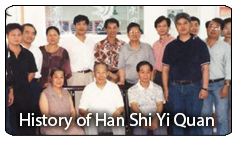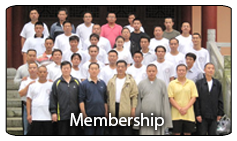History of Han Shi Yi Quan
When Han You San began training his young sons in the martial and medical arts he loved, he could not know the chain of events he set into motion through his son, Han Xing Qiao, and grandson, Han Jingchen. Han You San imbued his sons with his passion and today, more than 100 years later, that passion has evolved into what we call Han Shi Yi Quan.
Han Xing Qiao, 1909-2004
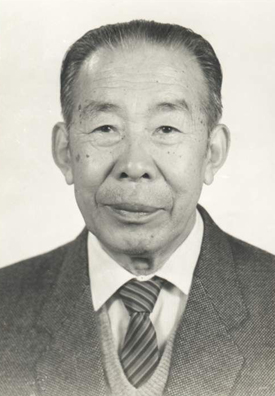
Han Xing Qiao was born in China during turbulent times that would continue throughout most of his 95 years. Though his family was poor, Han Xing Qiao was fortunate that his parents understood the importance of education and saved the money needed to send him to school. Beyond what he learned in school, Han Xing Qiao received school lessons from his mother and the medical knowledge and kung fu teachings his father had learned from his mentor, You Ming. Under his father’s skilled instruction, young Han Xing Qiao learned Xing Yi Quan, Ba Gua Quan, and Ba Ji Quan. He also received introductions to famous teachers, which allowed him to learn from such masters as Li Cun Yi of Xing Yi, known as the "Pole King" for his outstanding skills and fighting ability with a long pole.
After graduating from school, Han Xing Qiao established the Chinese Medical School in Beijing and Shanghai, which included Tui Na practice and treatment. He became the head of the Yang Sheng International Research in Shanghai and also taught his kung fu at the Jing An Temple, as well as at schools and selected Shanghai factories.
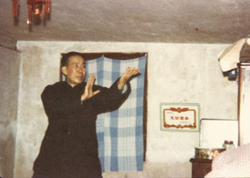
Studying under Master Wang Xiang Zhai
By 1931, Han Xing Qiao had permanently moved to Shanghai where he was recognized as a top instructor. It was here that he met Master Wang Xiang Zhai and quickly became an ardent student of the man who would eventually adopt him as his son. For the next 15 years, Han Xing Qiao and his brother, Han Xing Yuan, remained with Master Wang in Shanghai and Beijing, until the chaos of World War II and Japanese invasion sent them in different directions.
During these turbulent times, Master Wang Xiang Zhai developed the concepts and framework of Yi Quan, the art that would make him famous. In this process, he exchanged ideas with Master Qieu Xian Tan and decided to include "Zhong," or pile standing, as a Yi Quan foundation.
Master Han Xing Qiao assisted Master Wang in developing and spreading the art of Yi Quan, becoming one of the “Four Diamonds” designated by Master Wang to accept and engage all challenges. Challenges came often after Master Wang bought space in the Beijing newspaper to write about the deplorable state of the Chinese martial arts and invited visitors to his home on Sunday afternoons. Many came, but only a few were selected as students to Master Wang.
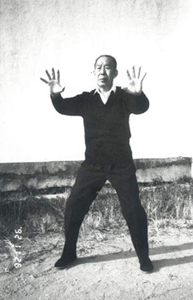
Dispersion
The Beijing Yi Quan dispersed during the Chinese Civil War, which ended with the Communists’ victory in 1949. The Han brothers went back to Shanghai until Han Xing Yuan fled to Hong Kong and Han Xing Qiao was ordered to the farthest reaches of northwest China, Urumqi of Xinjiang Province.
In Urumqi, Master Han Xing Qiao began operating a clinic for Yang Sheng and Tui Na. As a doctor noted for his skill, he eventually became the director of the Xinjiang Uyghur Medical Hospital and Dean of the Xinjiang Uygur Autonomous Medical Council. In 1973, Chinese Premier Zhou Enlai appointed him to introduce Yi Quan theory into the state sports commission and later named him president of the Xinjiang Wushu Association.
After retiring from medicine, Master Han continued focusing on Yi Quan research and teaching. In 1985, with the support of the Hong Kong Yi Quan Association, Master Han opened the Zhuhai Yi Quan Training Center in Zhuhai and, in 1990, he became chairman of the Yi Quan Research Association. Like his father before him, Master Han passed along his skills, knowledge and passion for Yi Quan to his son, Master Han Jingchen, during 10 years of continuous training.
Han Xing Yuan, 1915-1983
The younger brother of Han Xing Qiao, Han Xing Yuan also studied under Master Wang Xiang Zhai and earned designation as another of the “Four Diamonds,” who took on all challenges offered.
In 1949, following the Communist victory in China, Han Xing Yuan fled to Hong Kong where he operated a modest Yi Quan teaching practice until 1966, when he established the Yi Quan & Medical Association and began teaching a variety of students, including many wealthy Hong Kong residents.
Some of Han Xing Yuan’s students moved overseas to France, the United States, Canada, and Australia. Through their encouragement, Han Xing Yuan began traveling to England, Canada, and the United States in 1970, teaching classes for one to six months in different countries and earning his place as the first to spread Yi Quan to the world.
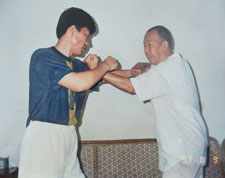
Han Jingchen, 1956 –
The son of Han Xing Qiao, Han Jingchen was born in 1956 in Urumqi of Xinjiang Province. He began his training early and, with his father’s guidance, he experienced his first insight into the "natural" way at age 10, forever changing his perception of the martial arts.
Though life was hard in Urumqi, Han Jingchen faithfully studied martial arts and Chinese medicine, eventually becoming a doctor. At the age of 27, he moved with the family when his father relocated to Zhuhai, China at the invitation of the Hong Kong Yi Quan Society. Here his father established the Zhuhai Yi Quan Training Center and, in 1990, became chairman of the Yi Quan Research Association.
After moving to Zhuhai, Master Han Jingchen made the life-changing decision to stop practicing medicine and devote the next 10 years to training one-on-one with his father. In 2001, father and son discussed naming the art Han Shi Yi Quan to clearly separate it from the other variations that had developed after Wang Xiang Zhai's passing in 1963. His father concurred and agreed that the name change would occur after his passing. As one of the first and longest-term students of Wang Xiang Zhai, and one of the “Four Diamonds,” the name change would honor his art and contribution.
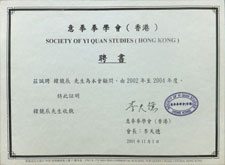
In 2004, Master Han Jingchen served for one-year as the councilor for the Hong Kong Yi Quan Society and was bestowed an honorary lifetime title. His father died that same year, and the art became known as Han Shi Yi Quan.

